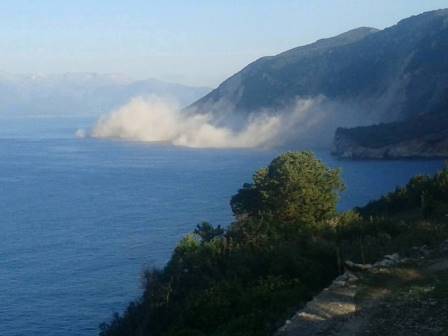Benchmark Problem #5: Two-dimensional subaerial granular slide
This benchmark problem is based on the 2D laboratory experiments of Viroulet et al. (2014) in a small tank at Ecole Centrale de Marseille's (IRPHE; Marseille, France), for a series of triangular subaerial cavities filled with dry glass beads of diameter D and density ρs = 2,500 kg/m3, released by lifting a sluice gate and moving down a plane 45 deg. slope into water. See Figures 5.1, 5.2 and 5.3 for pictures and sketches of the experimental set-up.
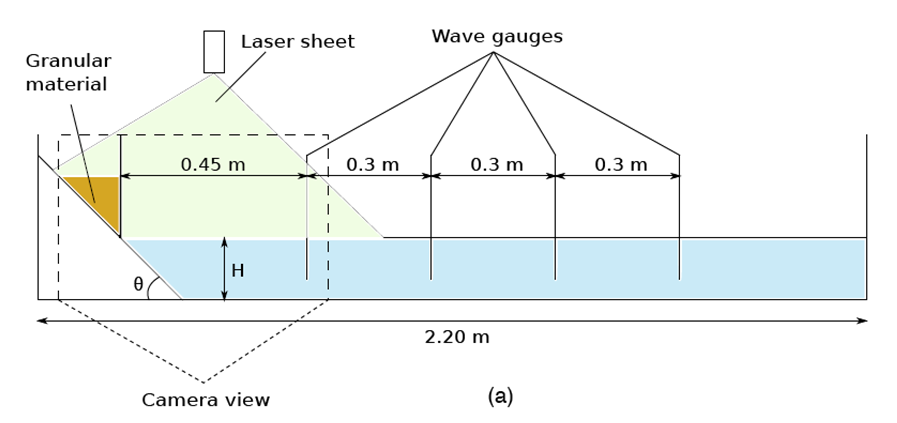
Fig. 5.1: Set-up for laboratory experiments of tsunami generation by subaerial slides made of glass beads performed in IRPHE's precision tank of (useful) length l = 2.20 m, width w = 0.2 m, and water depth H = 0.150 m. Upon release, beads are moving down a θ = 45 deg. slope. The slide shape and water motion are recorded with high speed video camera and laser PIV, respectively. Surface elevations are recorded at 4 wave gages (WG1, WG2, WG3, WG4) marked on the figure. Picture of measured experimental slides, water elevations, and water velocities are given in Figures 5.2, 5.3 and 5.4.
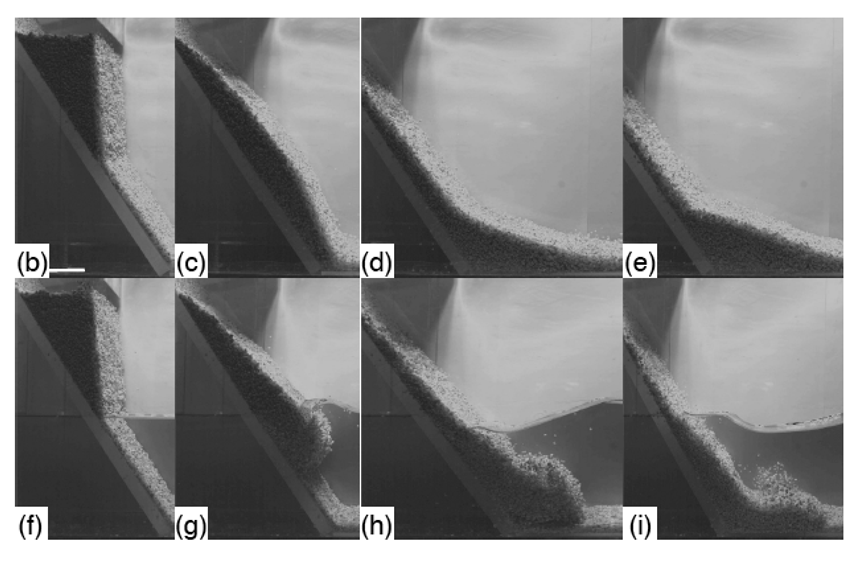
Fig. 5.2: Shape of glass bead slide recorded with a video camera every 0.2 s (white bar in (b) is 5 cm long).
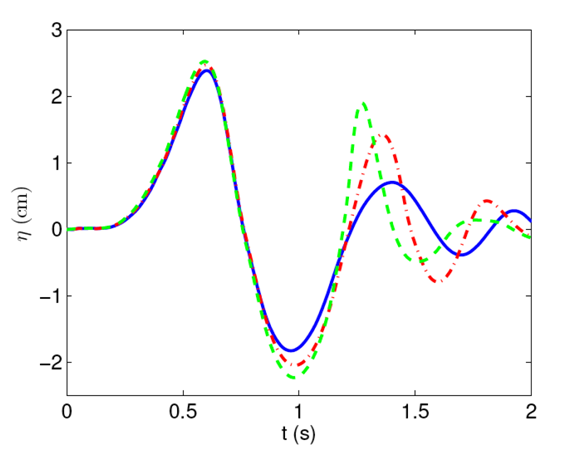
Fig. 5.3: Example of surface elevations measured at wave gages WG1 for 3 different slides.
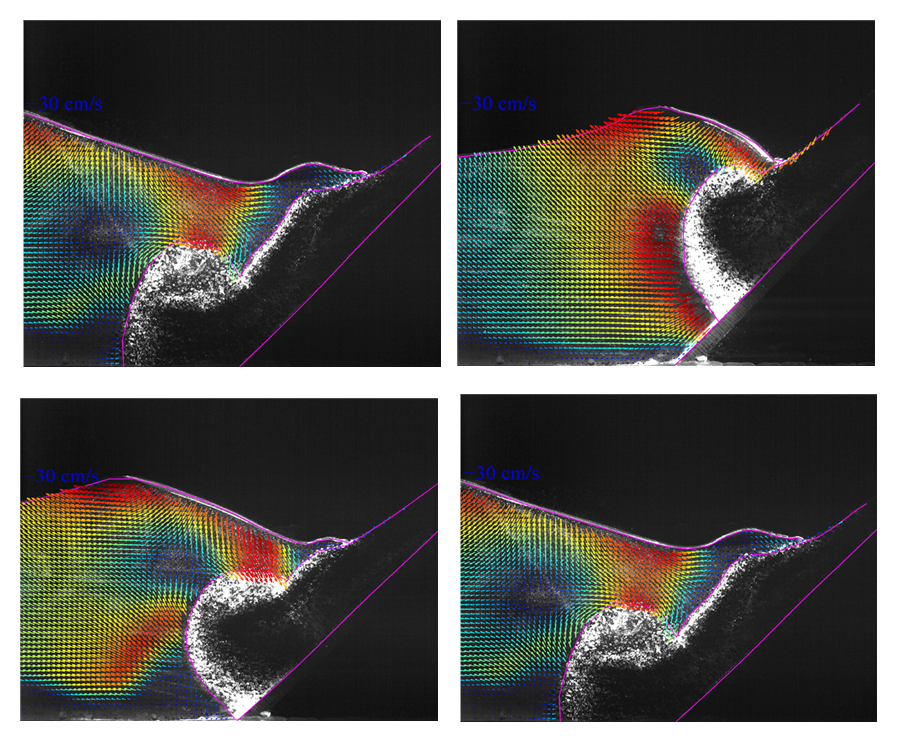
Fig. 5.4: Slide shape, surface elevation and water velocities measured with PIV for one case.
The experimental set-up used by Viroulet et al. (2014) is shown in Figure 5.1. It consists of a wave tank, 2.2 m long, 0.4 m high, and 0.2 m wide. A granular slide is initially retained by a vertical gate on the dry slope. At the beginning of the experiment, the gate is suddenly lowered. In the numerical model, it should be assumed that the gate release velocity is large enough to neglect the time it takes the gate to withdraw. The initial slide shape will be assumed to have a triangular cross-section over the width of the tank, with downtank length L, and front face height B = L as the slope angle is 45o. In all cases, the front face of the granular slide touches the free surface at t = 0.
Two test cases are considered in this benchmark, which are referred to as Case 1 and Case 2 in the result files names. The initial conditions for each case are, respectively:
Case 1 : D = 1.5 mm, H = 14.8 cm, L = 11cm
Case 2 : D = 10 mm, H = 15 cm, L = 13.5 cm
The volume fraction of the granular media for the 2 cases was estimated to be 0.6 ± 0.05.
Viroulet et al. (2014) performed numerical simulations where they tested two different fluid rheology, a Newtonian fluid and a Bingham fluid with a density 0.6 times that of the dry beads, ρs = 1,500 kg/m3. For Case 1, best results were obtained with a viscosity of 5 Pa.s for the Newtonian fluid and with a viscosity of 5 Pa.s and a shear stress of 100 Pa for the Bingham fluid.
Problem:
The benchmark here will consist in simulating the time series of free surface elevations at the 4 wave gages WG1-WG4 for the 2 test cases listed above. Experimental results are provided for the measured surface elevations for these 2 tests are provided as text files test_1mm5.txt, test_10mm.txt (tab delimited) or test1mm5.csv , test10mm.csv (comma separated variable). The data is given in format (t (s), η1 (cm), η2 (cm), η3 (cm), η4 (cm)).
